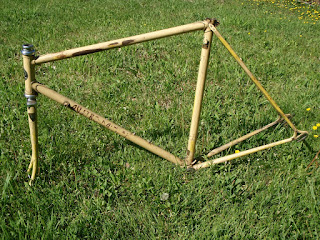There are two types of consumers: the consumer who wants to buy and ride "right now" and the consumer who is willing to wait, to check out choices, shop around months in advance of delivery. A consumer who wants the bike "right now" is prepared to have choices made for him by the manufacturer; the consumer who waits wants to make the choices (about components, wheels, color etc) for himself. The consumer is living in two worlds these days: he wants the choice and the pricing and convenience of the Internet, but he also wants the community and the support of the bricks and mortar shop. It is hard to have both: the physical store will always have higher overhead costs (rent and labor).
Perhaps the best way forward is to guide the consumer towards a model where he can have the choice and pricing of the Internet and the tangible and physical support of the local store. The showroom model is becoming more commonplace with big box retailers who realize that having a huge building filled with inventory is not the most efficient use of physical and financial resources. Best Buy for example now has showrooms where consumer can fiddle with the electronics in a comfortable environment; the consumer can try out the item and decide if he likes it. The key point is that Best Buy stocks less inventory on site; if the consumer wants to buy the item and it is not in stock, he orders the item from a computer in the showroom and the item is shipped to his house the next day.
Applying this model to bicycles would be something like this: the consumer goes to a local bike store where he can inspect and test ride a demonstration bike; he identifies the frame model he wants and its size; the bike shop, which acts as an agent, orders the frame from the manufacturer's website for the customer; the frame is sent to the bike shop; the consumer asks the bike shop to order the components and wheels, or the consumer does that on his own and has these items sent to the bike shop; the bike shop receives the materials and assembles the bike.
The consumer obtains the pricing and the selection he wants and the bike store gets business from ordering components, the frame, the wheels and build up charges. The trouble is that the consumer has to be organized because the ordering process takes a while and so does the build up process. However, if the manufacturer has stock in its warehouse in the local market and the bike store is organized, the wait time is not all that long. The wait might be longer if the manufacturer has no stock "on shore" and is awaiting and new shipment from the factories in Asia. This would have to managed through an order book arrangement or "pre-order" list. To avoid this problem requires having factories that can fill orders quickly throughout the course of the entire year: if suddenly the market wants 50 frames, the manufacturer has to have the networks and the resources to deliver on time.
The bike store meanwhile does not have to tie up resources in bikes that it is not sure it can sell; it does not have to pay high rent for large facilities that can store the bikes. The model is more driven by the pull model (where the market determines demand) than the push model where resources are invested in inventory, mechanics and space and then salesmen are hired to "push" the products into the market. The pull model favors the Internet and the consumer who will wait and order in advance; the push model favors the " want it now consumer".

















